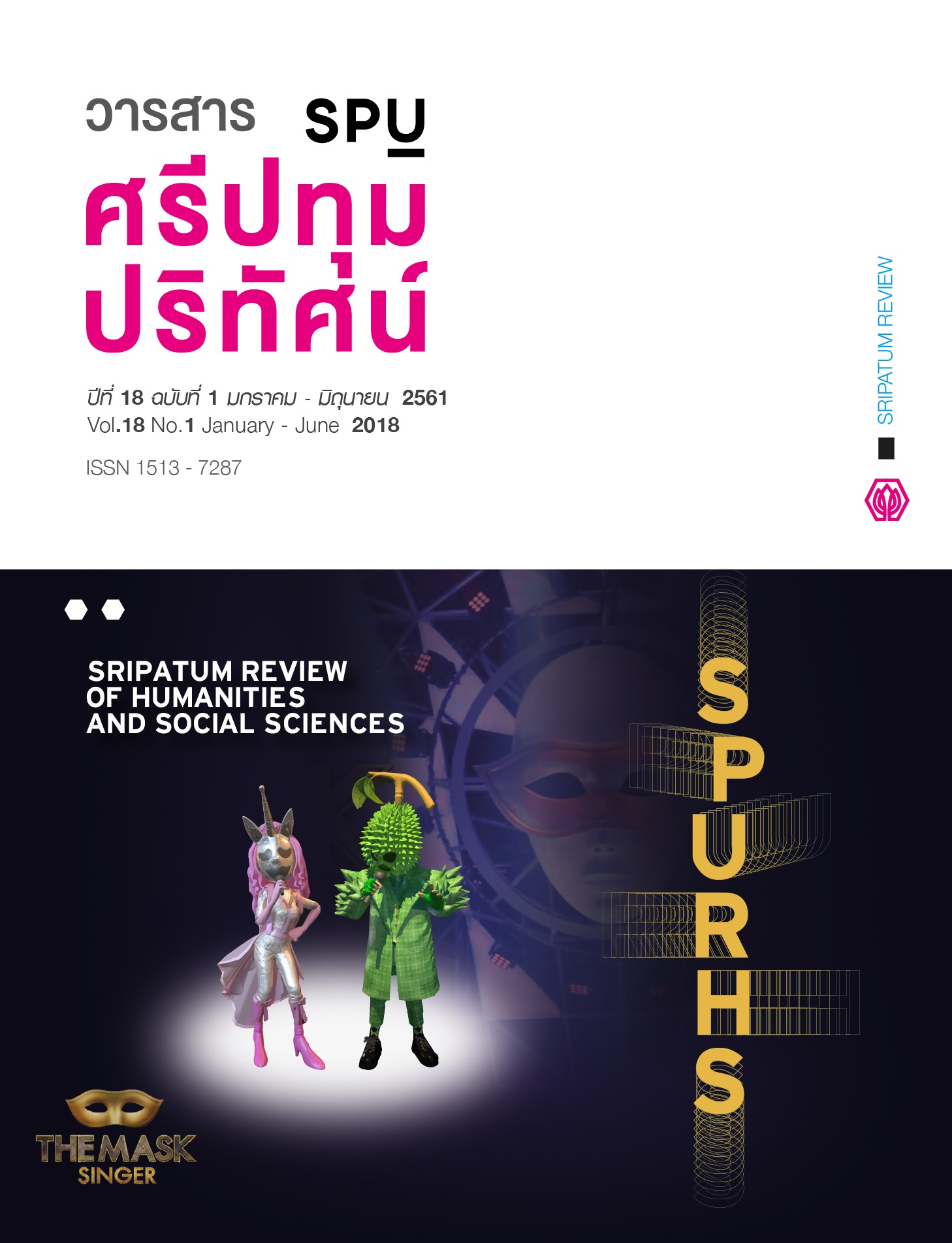INTERNAL CORPORATE BRANDING: A CASE STUDY OF BANGKOK BANK PUBLIC COMPANY LIMITED
Main Article Content
Abstract
This research aimed (1) to measure the levels of internal corporate branding, learning organization, organizational culture, and internal communication evinced at Bangkok Bank Public Company Limited (BBPCL), (2) to measure the levels of employee involvement and perceived standardized shared value, and (3) to examine the effects of factors of learning organization, organizational culture, and internal communication via perceived standardized shared value and employee involvement on corporate brand image. The research sample consisted of 400 BBPCL employees employed in Bangkok Metropolis and its environs. These employees provided products and front services, were employed at operational centers, were involved in the credit business, and were supporting and managerial employees. The research instrument was a questionnaire. Research data were analyzed using the mean, standard deviation, and t-test. The researcher also analyze data with content analysis through applying the variance-based and covariance-based comparison. The results of SEM analysis showed that the hypothesized model constructed by the researcher evinced congruence with the empirical data. This was shown by the good result of Goodness of Fit Index (GFI) and the Adjusted Goodness of Fit Index (AGFI). Thus, it can be said that the hypothesized model satisfied the quality standard, since congruence between empirical data and the hypothesized model was at the .01 level of statistical significance.
Article Details
1. กองบรรณาธิการสงวนสิทธิ์ในการพิจารณาและตัดสินการตีพิมพ์บทความในวารสาร
2. บทความทุกเรื่องจะได้รับการตรวจสอบทางวิชาการโดยผู้ทรงคุณวุฒิ แต่ข้อความและเนื้อหาในบทความที่ตีพิมพ์เป็นความรับผิดชอบของผู้เขียนแต่เพียงผู้เดียว มิใช่ความคิดเห็นและความรับผิดชอบของมหาวิทยาลัยศรีปทุม
3. การคัดลอกอ้างอิงต้องดำเนินการตามการปฏิบัติในหมู่นักวิชาการโดยทั่วไป และสอดคล้องกับกฎหมายที่เกี่ยวข้อง
References
Anantamula, V. & Kanungo, S. 2006. “Structuring the Underlying Relations Among the Knowledge Management Outcomes.” Journal of Knowledge Management, 10(4), 25-42.
Balmer, J. M. T. & Gray, E. R. 2001. “The three virtue and seven deadly sins of corporate brand management.” Journal of Marketing, 27(1), 1-17.
Berry, L. 2000. “Cultivating Service Brand Equity.” Journal of the Academy of Marketing Science, 28,128-137.
Daft, R.L. 2001. Organization Theory and Design. 7th ed., Cincinnati, OH: South-Western College.
Daily, B. F. & Huang, S.C. 2001. Achieving Sustainability Through Attention to Human Resource Factors in Environmental Management. International Journal of Operation & Production Management, 21(12), 1539-1552.
De Chernatony, L. 2001. From Brand Vision to Brand Evaluation: Strategically Building and Sustaining Brands. Oxford: Butterworth-Heinemann.
Fombrun, C. J. & van Riel, C.B.M. 1997. “The Reputational Landscape.” Corporate Reputation Review, 1 (1/2), 5 – 13.
Kandlosi, N.S.E., Ali, A.J. & Abdollahi, A. 2010. “Organizational Citizenship Behavior in Concern of Communication Satisfaction.” International Journal of Business and Management, 5(10), 51-61.
Kapferer, J.N. 2001. Reinventing the Brand. British Library Cataloguing in Publication Data.
Lai, M.F. & Lee, G.G. 2007. “Relationships of organizational culture toward knowledge activities.” Business Process Management Journal, 3(2), 306-22.
Lubit, R. 2001. “Tacit Knowledge and Knowledge Management: The Keys to Sustainable Competitive Advantage.” Organizational Dynamics, 29(4), 164-178.
Matanda, M. J. & Ndubisi, N.O. 2013. “Internal Marketing, Internal Branding, and Organisational Outcomes: The Moderating Role of Perceived Goal
Congruence.” Journal of Marketing Management, 29(9 –10), 1030–1055.
Miles, R.E. & Snow, C.C. 1978. “Organizational Strategy, Structure and Process.” Academy of Management, 3(3), 18-20.
Mum W. Y., Alex H.H., Dominic H. C, & Lau, 2012. “Employee Participation: Success Factor of Knowledge Management.” International Journal of Information and Education Technology, 2(3), 262-264.
Nonaka, I. & Takeuchi, H. 1995. The Knowledge-Creating Company: How Japanese Companies Create the Dynamics of Innovation. New York: Oxford University Press.
Pilati, R. & Borges, J.E. 2008. “Affective Predictors of the Effectiveness of Training Moderated by the Cognitive Complexity of Expected Competencies.” International Journal of Training and Development, 12(4), 226-237.
Punjaisri, K. & Wilson, A. 2011. “Internal Branding Process: Key Mechanisms, Outcomes and Moderating Factors.” European Journal of Marketing, 45, 1521–1537.
Sias, P.M. 2005. “Workplace Relationships Quality and Employee Information Experience.” Communication Studies, 56(4), 375-95.


